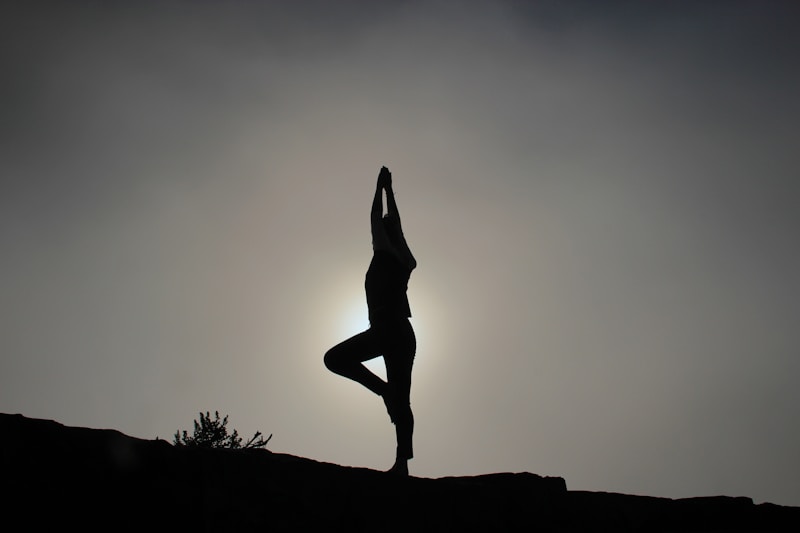This is the first in a series of articles to introduce the Eight Limbs of Yoga. Over this series of writing we’ll look at each of the limbs in-depth with the aim of bringing them alive, showing how helpful and practical they can be in everyday life, and assisting our collective struggle with the monkey mind.
The monkey mind is a state of mind where you have no control over your thoughts — just like a real wild monkey, uncontrollable, swinging from tree to tree. Examples in our own lives may include hidden (and not-so-hidden) fears, desires, moods, obsessions and addictions, which subconsciously rule our lives. Our ‘monkeys’ are always on their way somewhere, and we often don’t fully understand it’s motivations.
Let’s Start With An Analogy
Isn’t it great the way you can learn to drive a car, and get yourself from A to B, without having to understand the mechanics of the engine? You put the key into the ignition, take the hand-brake off, press clutch and petrol, and vroom – off you go. Personally, I’m delighted I don’t have to know what’s under the bonnet of the car, in order to drive.
It reminds me a little of how I came to yoga. At a yoga retreat in Thailand years ago, I learned a series of basic postures, and did them every day for a month. It felt great! We were taught theory and philosophy, which I found very interesting, but somehow I couldn’t really connect the theory with the physical stuff I was doing every day. I was getting the benefits of the practice, without having to understand how it worked. I was happy to ‘drive the yoga car’ without having to learn the mechanics.
Cue the Eight Limbs of Yoga
Among some of the first concepts I was taught were the Eight Limbs of Yoga, one of the cornerstones of a yogic lifestyle, taken from the Yoga Sutras of Patañjali. According to Patañjali, yoga consists of eight parts:
- Yama – ethical disciplines
- Niyama – self-observations
- Asana – physical posture
- Pranayama – breath control
- Pratyahara – sense withdrawal
- Dharana – concentration
- Dhyana – meditation
- Samadhi – a state of freedom, joy and peace.
It was a number of years until I started appreciating how important these eight limbs of yoga really are. And the reason I suddenly got it? I started to understand why Patañjali was recommending that yogis practice these. I had been focusing on what was being asked of the yogi but not why it was being asked. This was a game changer.
Start With Why
You may have heard of a guy called Simon Sinek, a business consultant who did a very popular TED talk with the title ‘Start with Why’. He argued that the most successful people and organisations in the world are not the ones who focus on what they do, or how they do it, but rather the ones who are clear on why they do it, and are led by this.
The Yoga Sutras eventually gave me the real reason I was practising yoga. It was far more subtle than I thought, and it was laid out for me in the first few lines of Sutras, which I’ll paraphrase for you:
I’m about to tell you about yoga. Yoga happens when you stop identifying with the ‘monkey-mind’. When you are not identified with the ‘monkey-mind’, you can be calm, and you can know who and what you are. When you are identified with the ‘monkey-mind’, you may get confused, and become a victim to ‘the monkey’, who may drag you off to all sorts of strange places you don’t want to be.
So yes, I was feeling physically fitter and stronger, and more relaxed. But the real clincher was my new calmer state of mind. This happened slowly over time as a result of the yoga practice, but also as a result of starting to work on all the ‘limbs’ of yoga. Yes my monkey was (and is!) still chattering away — but it is easier now to step into the observer mode. I don’t need to join it on every wild goose-chase that goes on inside my head. This had happened without me realising what I was doing.
Eureka!
So the Eight Limbs of yoga, and especially the first two (the yamas and niyamas) were not just some set of rules for me to follow, or for some judgemental yogi to judge me by. Rather, they are very practical recommendations for us to be able to achieve this freedom from the ‘monkey-mind’.
This wasn’t some super-yogi from hundreds of years ago, saying ‘do this or you’re a bad person’, it was rather a wise and practical person saying, ‘I recommend you follow these steps to live a better, happier, more balanced life.’ This seemed much easier to swallow.
The Proof Is In the Pudding
Going back to my own yoga practice and lifestyle, I could very clearly feel the benefits of a regular practice. Most of the time, I was calmer, happier, physically stronger, my sleep was better, and I was delighted that my once-achy knee seemed to be better. I noticed that I was able to stay calm and centred in situations which would completely stress me out in the past, and that I would be able to get a good night’s sleep even when life was being particularly stressful. Most importantly I seemed to be making better and more constructive decisions in my life.
The other great thing is that medical research, specifically in the fields of neuroscience and neuro-linguistic programming (among others), are starting to back up what Patañjali recommended. Generations of yogis have told us that it works, and in the last 10 to 15 years science is starting to explain it too. Patañjali had in fact put together for us a comprehensive system for working with our bodies and minds. Perhaps that’s another way we could say we often start out in yoga ‘driving the car’ without understanding the mechanics.
Ignition
I still don’t understand the inner workings of cars, even though I know how to drive. But I am on the very long road to understand how the body, mind and spirit work together, through yoga, and am excited to share my journey with you. Please read on to learn more about each part!













